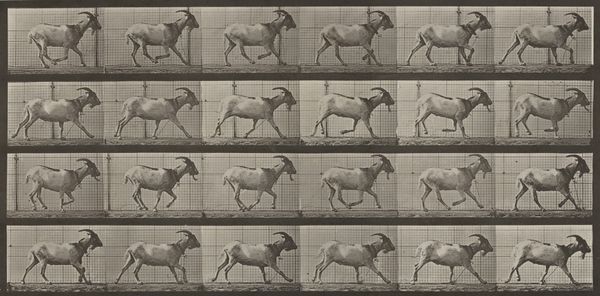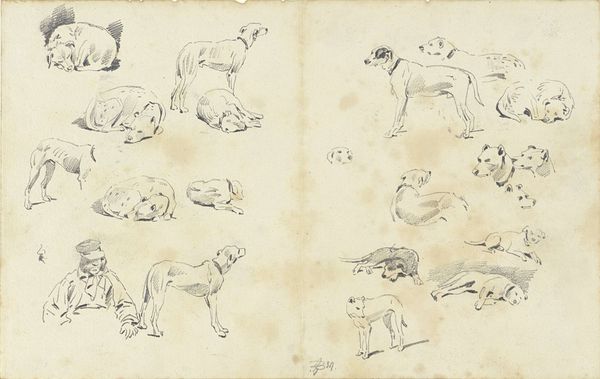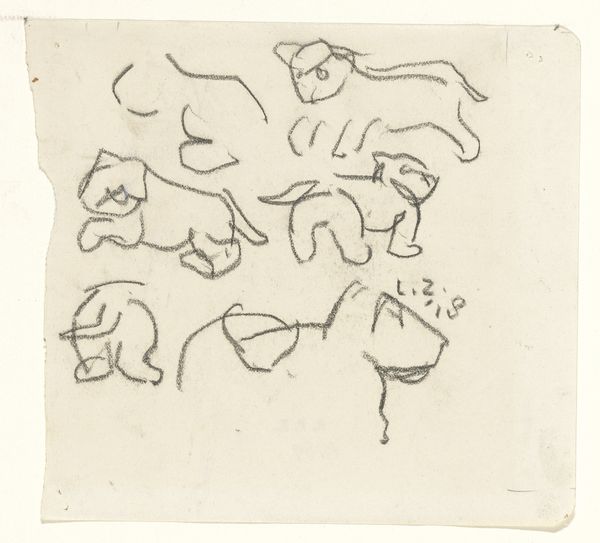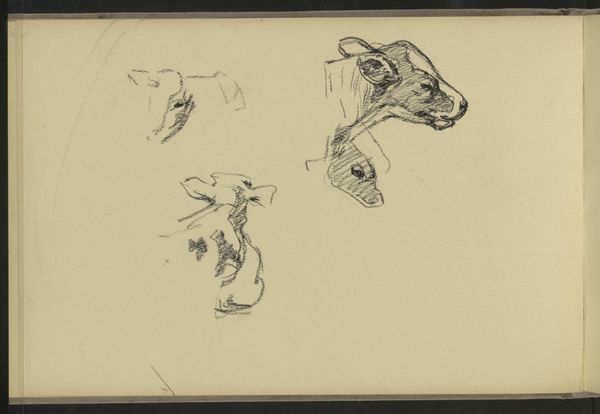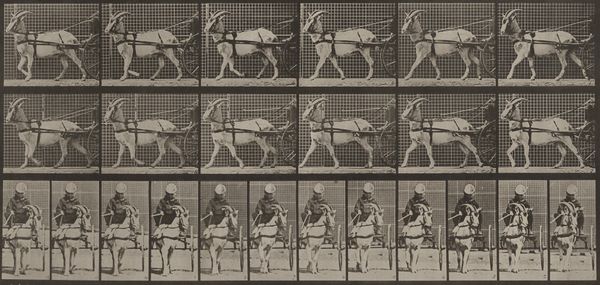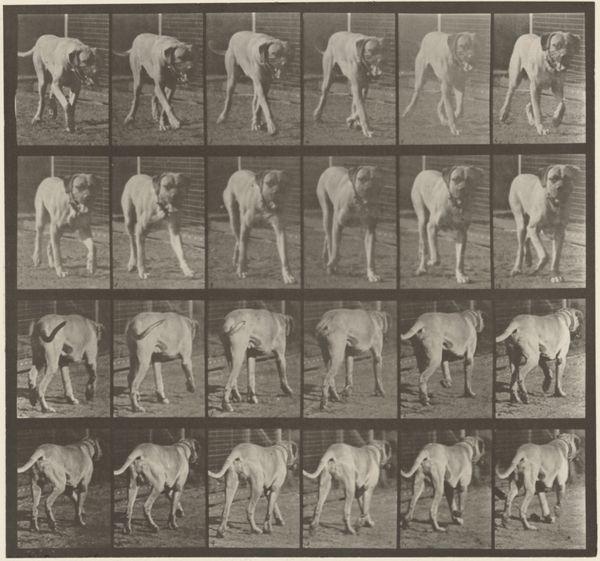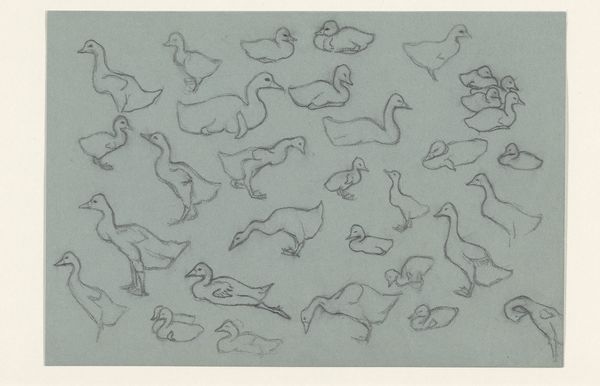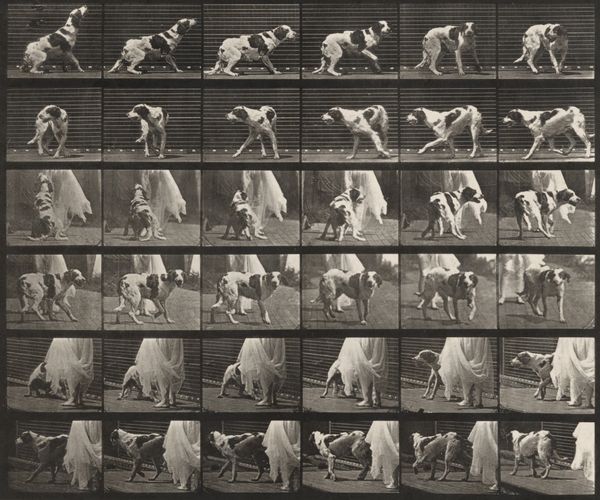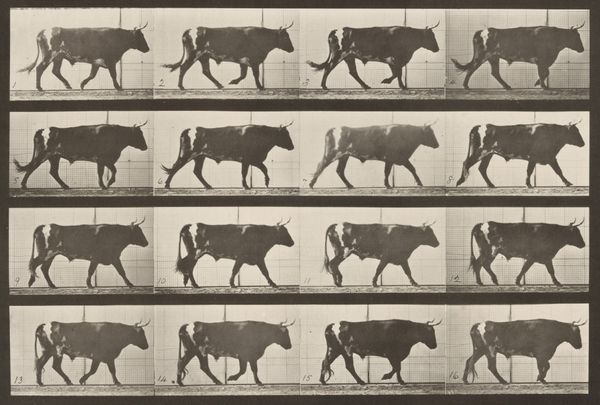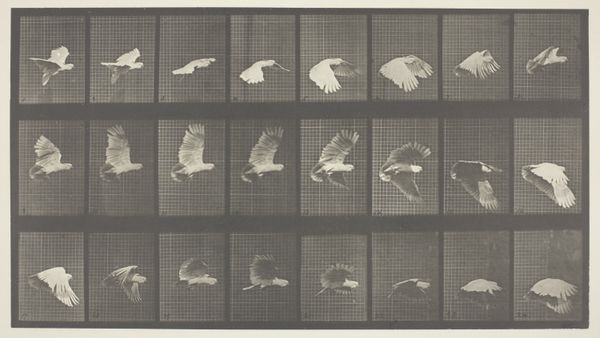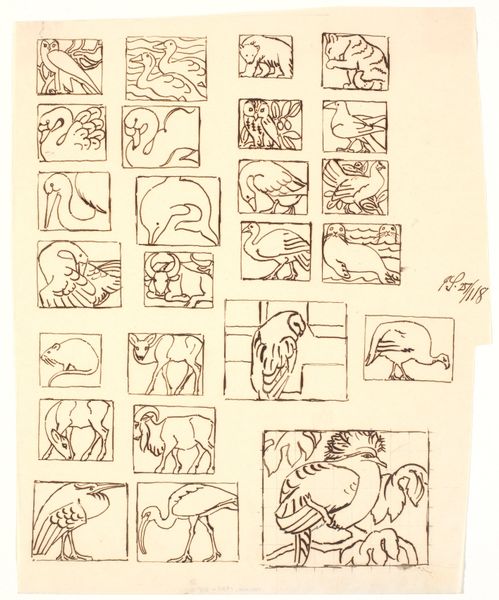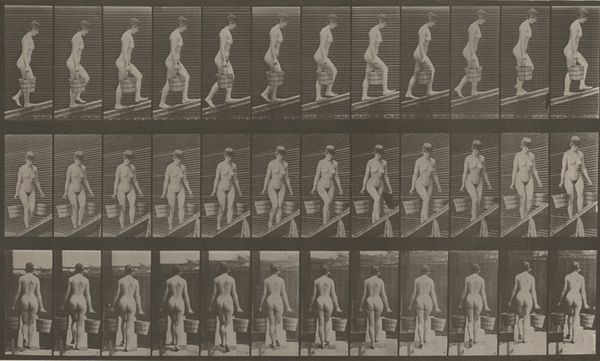
print, photography, gelatin-silver-print
animal
photography
gelatin-silver-print
realism
Dimensions: image: 20.1 × 40.1 cm (7 15/16 × 15 13/16 in.) sheet: 46.1 × 60.9 cm (18 1/8 × 24 in.)
Copyright: National Gallery of Art: CC0 1.0
Editor: Here we have Eadweard Muybridge's "Plate Number 716. Cat; walking; change to galloping," a gelatin silver print from 1887. What strikes me is how technical it feels, almost like a scientific study. How do you interpret this work? Curator: I see it as a critical investigation into the relationship between technology, labor, and representation. Consider the process: Muybridge's innovative use of photographic technology dissected motion, which had profound implications for both science and art. Each image represents a moment captured through the mechanics of the camera and its operator. What were the labor conditions for producing this image? And what impact did its widespread distribution have on popular culture? Editor: So, it’s not just about the cat’s movement, but the mechanics and implications of capturing that movement. Are you suggesting that it challenges the traditional definition of art? Curator: Precisely. By prioritizing the mechanics of image production, Muybridge collapses the distinction between art, science, and labor. He transforms artistic vision into a technological process, making visible the social relations embedded within it. Did this new mode of representing movement alter societal understandings of labor itself? Editor: It’s fascinating to consider this print as more than just a study of animal locomotion but as a snapshot of changing industrial and social processes. I never thought of photography in those terms before. Curator: Understanding the means of production offers a powerful lens through which we can analyze art's role in shaping, reflecting, and perpetuating societal power structures. So how can this change your own art creation? Editor: I think it would change my process, helping me to be more conscientious about the materials I use. It seems like analyzing the material processes will illuminate new, complex perspectives.
Comments
No comments
Be the first to comment and join the conversation on the ultimate creative platform.
